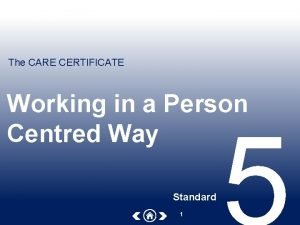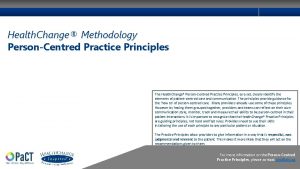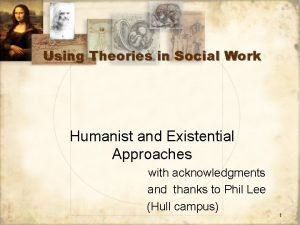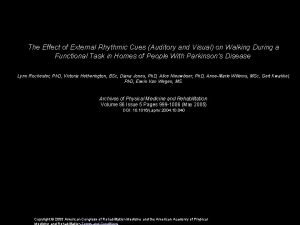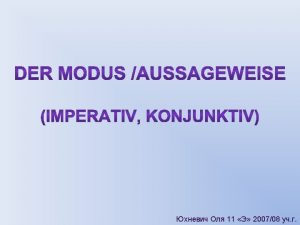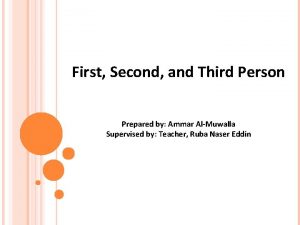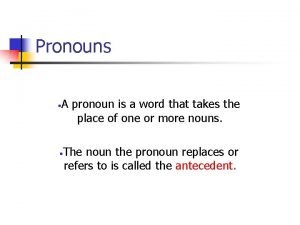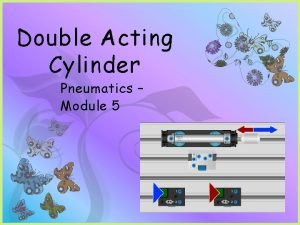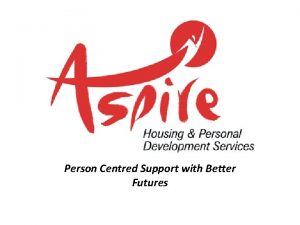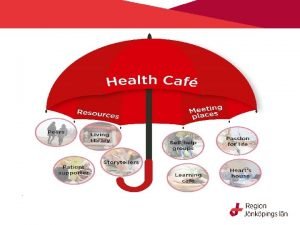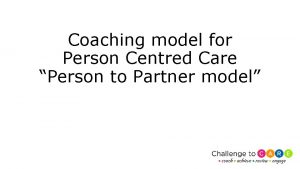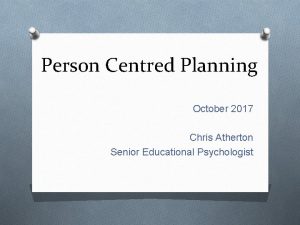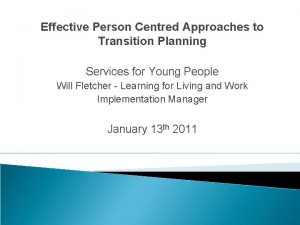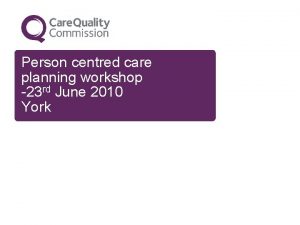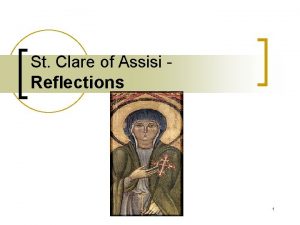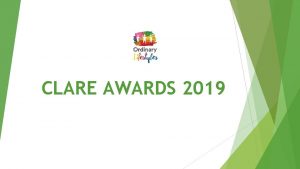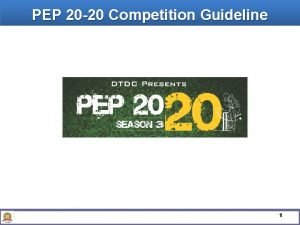PERSON CENTRED PLANNING Clare Hetherington Joint Acting PEP














- Slides: 14

PERSON CENTRED PLANNING Clare Hetherington Joint Acting PEP

Person Centred Approach to Planning § Process of continual listening, and learning; focussed on what is important to someone now, and for the future; and acting upon this in alliance with their family and friends. § The plan reflects what is important to the CYP, their capacities, and what support they require. § Balance between what is important to the CYP, their aspirations and the supports that they require. § Results on actions about life, not just services.

Voice of the Child/Young Person Five levels of engagement 1. CYP are listened to 2. CYP are supported in expressing their views 3. CYP’s views are taken into account 4. CYP are involved in the decisionmaking process 5. CYP share power and responsibility for decision-making

Planner Participant Consulted Represented Considered Informed Absent § The Ladder of Participation

Person Centred Planning Eliciting the voice of the CYP § Wide range of topics e. g. play, learning, leisure, keeping healthy, feeling positive, keeping safe, being part of my community, being independent. § Use everyday interactions and natural encounters § Plan ahead § Match tools/methods/strategies § True voice ------ adaptation § Consider the best conditions § Give a variety of opportunities § Sensitively balance CYP’s views with

Supporting the CYP to share their voice Champions for CYP § To ensure that the CYP’s views are elicited, listened to, and are integral to decision making § To communicate from the CYP’s perspective

Eliciting and sharing the CYP’s voice as an integral part of the graduated approach When? Why? What? Who elicits and how? Who facilitates sharing? An integral part of the graduated approach To support the CYP’s participatio n across the 5 levels of engageme nt Key questions relating to home, setting, community. A strengths based approach focusing on capacities as well as needs Key adults including parents/ carers, mentors CYP Plan, do and review cyclical processes At universal, targeted and specialist Parents /carers Lead co. Lead ordinating professiona l l Multiagency support Matching CYP Champion Multiagency

Person Centred Planning meeting Agenda 1. Welcome, introductions and ground rules. 2. Presentations, prepared in advance by the child, their peers and adults. 3. What do we like and admire about X? Positive comments on the child’s character, strengths and achievements. 4. What is important to X? The child’s views and preferences and their needs now and for the future. 5. Previous outcomes and actions: recap if necessary. 6. What is going well? Progress, success, effective strategies/provision. 7. What is not going well? Difficulties, problems, barriers to success, disagreements etc. 8. What do we want X to learn this year? Specific, realistic outcomes that are meaningful to the child. 9. Action plan, relating to what is not going well and clear about who, what, when and who will check. 10. Conclude with a positive summary

Ground rules for planning meetings 1. Follow the agenda in order. 2. Address your comments to the child or young person whenever possible, using language that is thoughtful and clear. 3. Every adult must say something they like and admire about the child or young person.

Resources § Person Centred Planning Meeting Agenda – 10 Points § Person Centred Review Meeting Checklist § Preparing to Plan § Recording system to help make a person centred plan

Feedback from CYP § Children could explain why they were meeting. Why do you think all these people came into school? Because to talk about me They were talking about me Why were they talking about you, Khaled? They talk about me They going to make my school lovely (Khaled aged 8)

Feedback from CYP § All children clearly described their own strengths and positive characteristics: Everyone said something That I’m clever, Good at science Good reading and drawing skills And I’m a good friend of course, That came from Vince (Nick aged 10)

Feedback from CYP § Children presented meetings as a positive, memorable and important experience that changed their life in school: an intervention. After the meeting it felt different I got on better outside Yeah, and helped with the class I was happier Because people understood me more School, it’s got better Feels different in every way (Leonie aged 9)

Feedback from SENCos § Children who take part in person centred reviews develop their skills and their self-determination. n Because they practice speaking and listening, because adults listen to them and because the process can be honest, positive and constructive
 Working with person centred values
Working with person centred values Health change methodology
Health change methodology Person-centred approach
Person-centred approach Person-centred approach
Person-centred approach Person-centred approach
Person-centred approach Richy hetherington
Richy hetherington Ian hetherington death
Ian hetherington death Peter hetherington
Peter hetherington Victoria hetherington
Victoria hetherington Plural höflichkeitsform
Plural höflichkeitsform First person second person third person chart
First person second person third person chart Person person = new person()
Person person = new person() Example of personal pronoun
Example of personal pronoun Pneumatic cylinder circuit
Pneumatic cylinder circuit Double acting cylinder pneumatic circuit
Double acting cylinder pneumatic circuit
